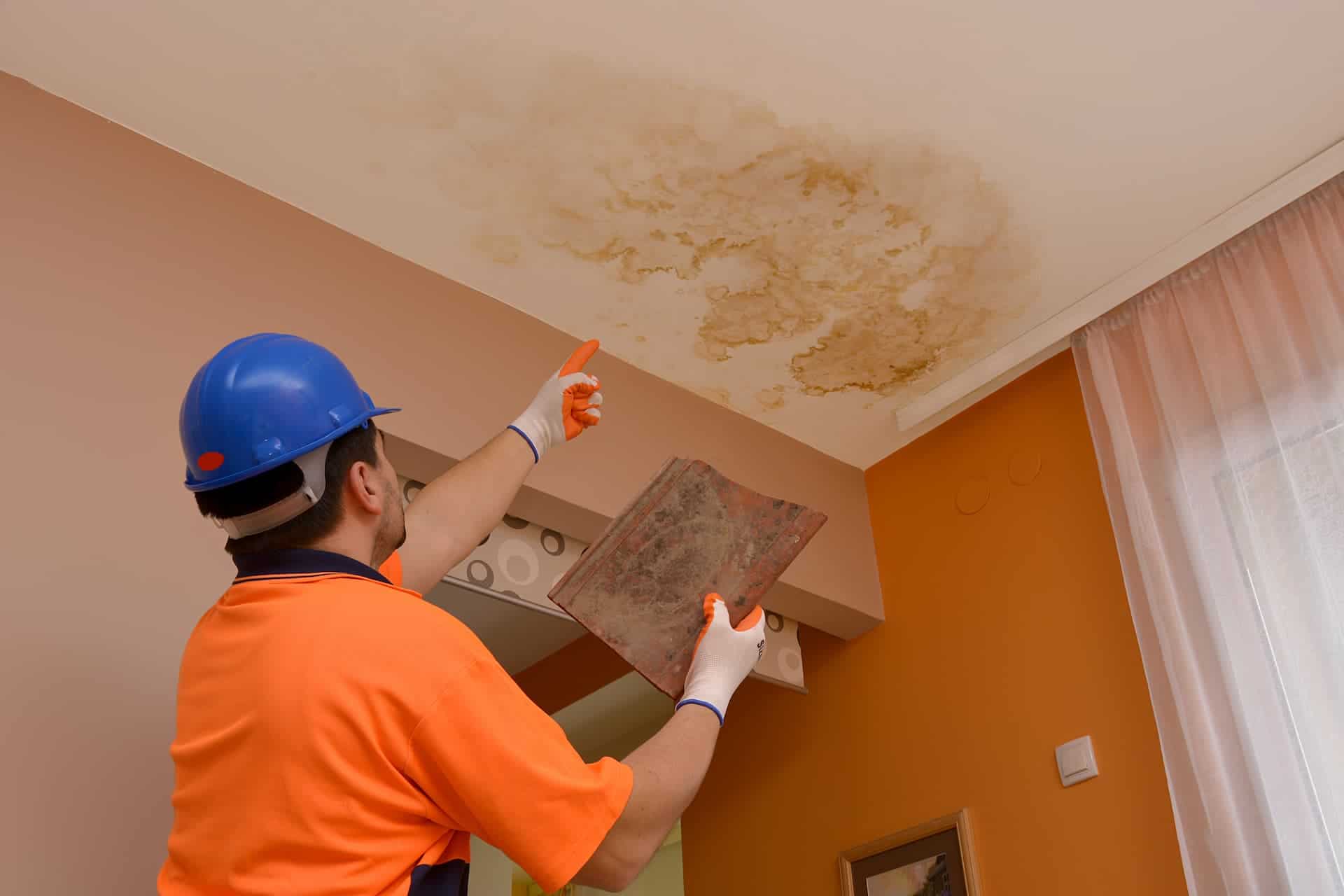
How to Repair a Shingle Roof Leak
GET A FREE INSPECTIONIn This Article
Primary Item (H2)Shingle roofing is the most common and popular type of roofing in the United States. Shingle roofs are lightweight, durable, attractive, and affordable. But despite these excellent features, shingle roofs can still develop issues like roof leaks.
In this article, we’ll talk about causes of roof leaks, how to spot roof leaks, and how to repair a shingle roof leak. While it’s best to prevent leaks, it’s not always possible, so it’s important to know how to identify and address them.
Common Causes of Roof Leaks
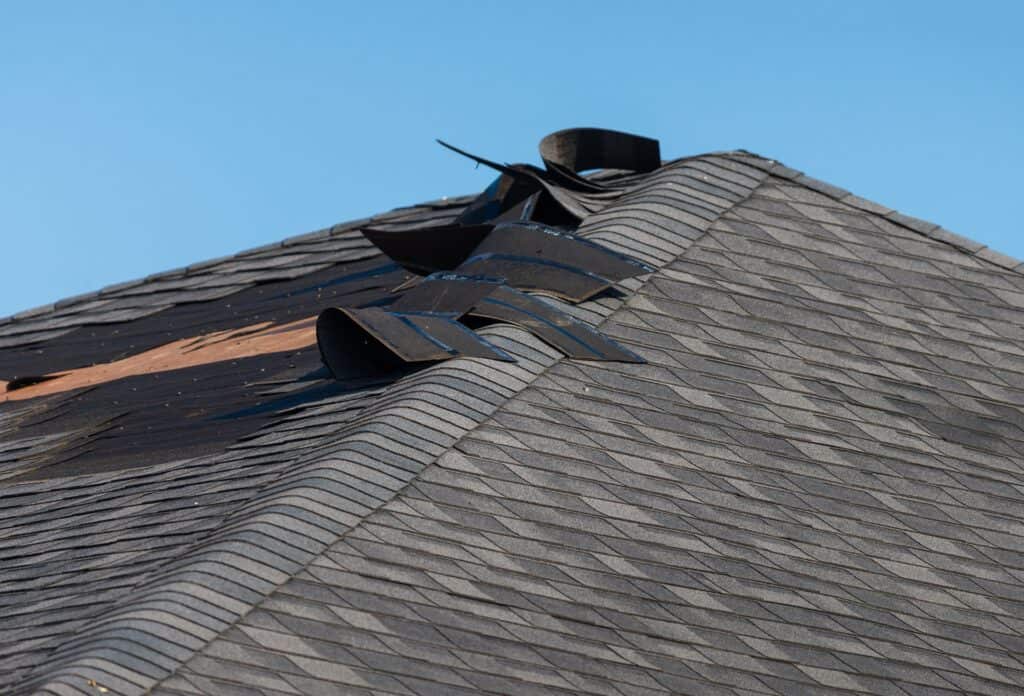
Roof leaks may happen for various reasons. Let’s take a closer look at each of the common reasons:
- Broken Shingles - The most common cause of roof leaks is broken shingles. When your roof has this problem, it becomes more exposed to heavy rains that could seep through tiny cracks. Broken shingles can often be spotted from the ground, but sometimes it’s necessary to have a professional perform a roof inspection.
- Cracked Flashing - Flashings are water-resistant barriers under your shingles. When you notice your roof leaking, this part of your roof likely has cracks. It's also possible that they're unsealed or corroded.
- Unsealed Valleys - Besides your flashings, unsealed valleys or the area where your roof comes together may have issues. This can look like wet spots trickling down the seams of your roof.
- Clogged Gutters - Another possible reason for roof leaks is clogged gutters. Too many leaves or debris are the main culprits for this cause. Clogs can block the water flow and cause water to pool in one area. When left unattended, this puddle may seep through cracks or weaken your roof's foundation.
- Condensation & Rot in Attic - Your attic is vulnerable to mold growth due to the temperature difference inside and outside your home. This problem is common to many homeowners and can eventually lead to rotten roof boards and leaks.
- Negligence - Poor maintenance and lack of routine inspections allow small issues to fester into larger issues, eventually causing leaks and other damage. Even worse, roof damage due to negligence and lack of maintenance is not covered by insurance. To avoid this, it’s advisable to schedule regular roof inspections with a reputable roofing company.
How to Find a Roof Leak
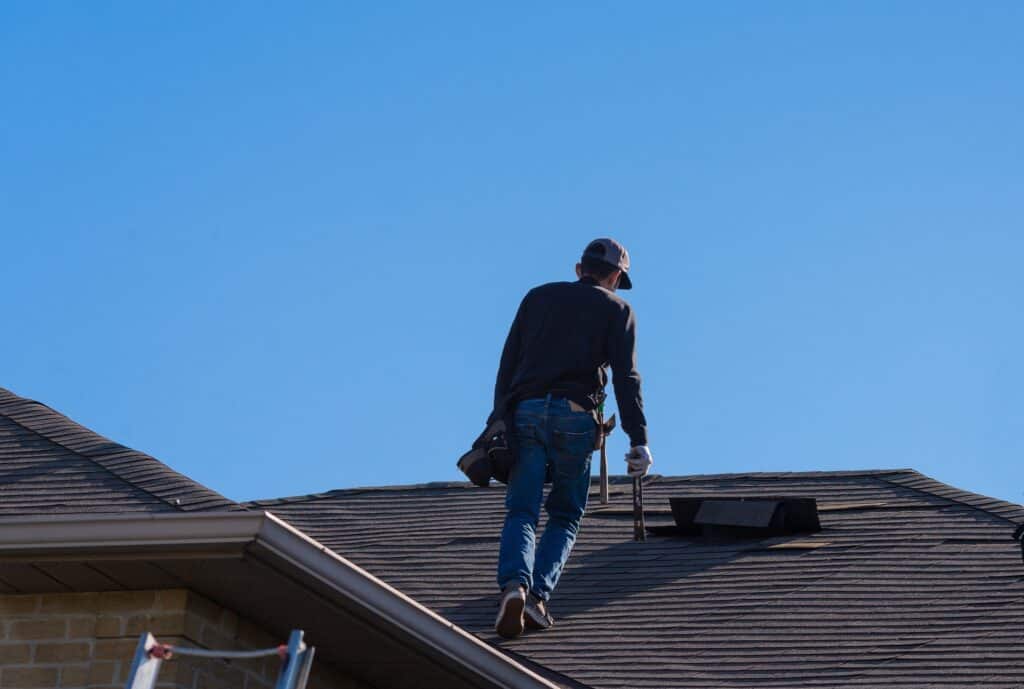
Locating the source of the roof leak is the first step to repairing it. While you can follow the steps below to try and find the leak yourself, this is not required. RoofClaim offers free roof inspections, so you’re free to put the problem in the hands of our professional inspectors at no cost to you.
Look for Dripping Water During Heavy Rains
When you live in a rainy area, the easiest way to find a roof leak is by looking at your ceiling during a heavy rain. If you see water dripping from your ceiling, that’s the obvious source of your leak.
Check Your Attic
If you’ve observed water leakage on your ceilings or walls, but want to better hone in on the source of the leak, you can try checking in your attic. The most common visible markings in your attic are water stains, wood rot, black marks, mold, or wet insulation.
Note: Only go in your attic if you are comfortable doing so and are knowledgeable about how attics are constructed. If you aren’t sure how to navigate an attic safely, do not go in your attic. Schedule a free roof inspection instead.
Observe Your Roof's Exterior
Another way to check for roof leaks is by inspecting its exterior. Stand a few meters away from your home and look for visible damage or issues. Look for curled, cracked, and broken shingles, valleys, and flashings. You can also check for rotted or discolored patches on your roof.
Note: It’s never advisable for you to go up onto your roof yourself. Always get a professional to perform your roof inspection. Not only is it safer, it’s better to have a professional third party identify and document your roof leak for insurance purposes.
Repairing Cupped Shingles
Cupped shingles are a common reason for roof leaks that can occur over time. Since it's inevitable for shingles to wear, the best way to fix leaks is to repair them. Here’s how it’s done:
- Lift Cupped Shingle - Contractors will go up on your roof and physically lift the cupped shingle.
- Sweep Debris Away - After lifting the cupped shingles, the contractor will sweep away loose debris that has gotten into your roof's seams.
- Place Roofing Cement - Once all the loose debris is gone, the contractor will place a layer of roofing cement below the shingle.
- Press Shingle Firmly - The contractor will then press the shingle back down and secure it in place until the cement dries. They may add additional roofing granules to finish the repair as well.
While this is a common roof leak repair that seems simple and easy to DIY, it’s never advisable to do this repair on your own unless you happen to be a roofing contractor. Schedule a roof repair so you can get this taken care of quickly and safely.
Replacing Damaged Asphalt Shingles
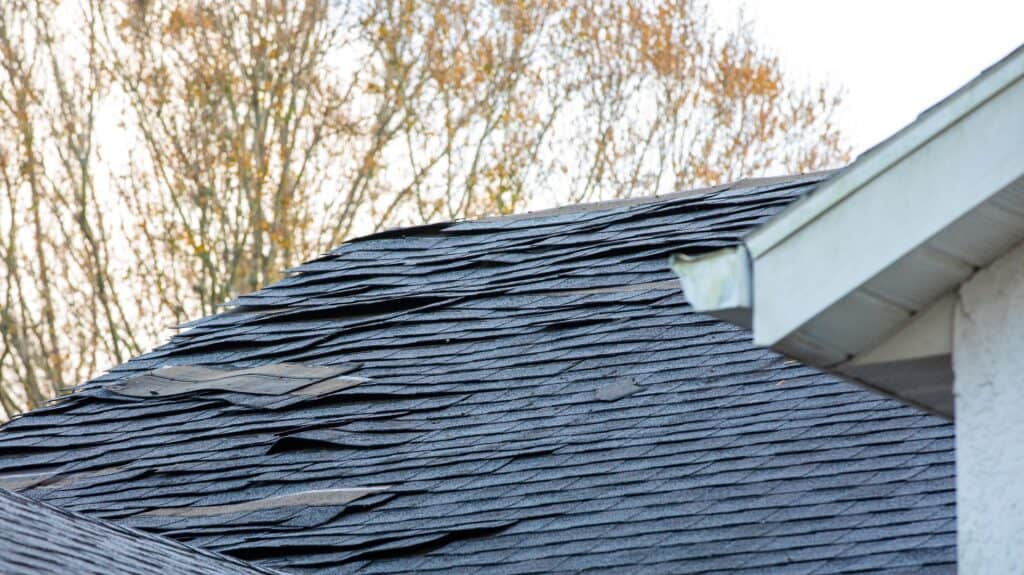
When damaged shingles are beyond repair, the best way to prevent roof leaks into your home is to replace them. If the shingles are brittle, there is a chance of creating more damage to the surrounding shingles that becomes a never-ending process, in which case a full roof replacement is recommended.
Once the repairability of the roof has been confirmed, the following steps can be followed for shingle replacement:
1. Loosen Seals and Nails
The contractor will locate the damaged shingles and will use a pry bar to loosen all the adhesives and nails.
3. Remove Damaged Shingles
Once they’ve loosened the adhesives and nails, the contractor will remove and discard the damaged shingles.
4. Place New Shingles
Once the old shingles are removed, the contractor will place and secure new shingles working bottom up.
5. Reseal New Shingles
With new shingles in place, the contractor will finish the process by sealing the new shingles.
Again, we never recommend that property owners do this work themselves. Always hire a licensed and insured roofing company.
Note: Shingle replacement can lead to a patchy looking roof as new shingles will look different than the worn shingles around them. In many cases, you’re better off doing a full roof replacement instead of a repair.
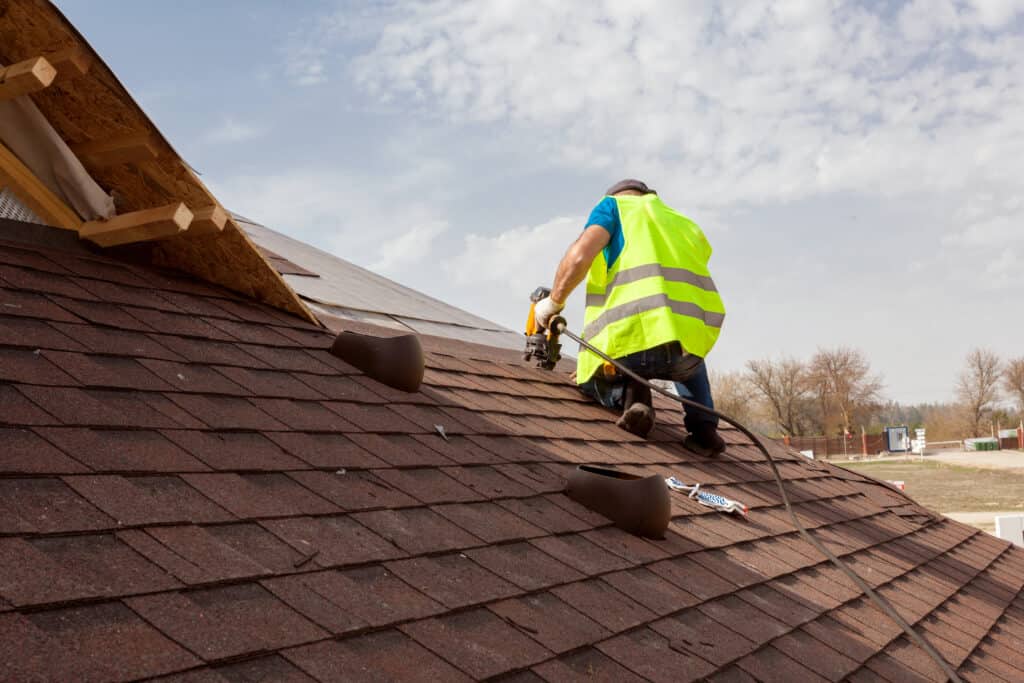
Can You Patch The Leak Yourself?
It is possible to patch a shingle roof leak on your own, but it is generally recommended to have a professional roofing contractor perform the repair. This is because improperly repairing a leaky shingle roof can cause more damage, and it can be difficult for an inexperienced person to identify the source of the leak and properly fix it.
If you do decide to patch a shingle roof leak on your own, here are some steps you can take:
- Locate the leak: Before you can fix the leak, you need to find out where it is coming from. Look for water stains on the ceiling or walls, and try to trace the water back to the source.
- Remove damaged shingles: Once you have located the leak, you may need to remove some of the shingles around it to access the damaged area. Use a pry bar to lift the shingles, being careful not to damage them further.
- Apply roofing cement: Apply roofing cement to the damaged area using a putty knife or trowel. Be sure to cover the entire area and press the shingles back into place.
- Replace damaged shingles: If the shingles are damaged beyond repair, you may need to replace them. Carefully remove the damaged shingles and replace them with new ones.
- Seal the area: Apply more roofing cement around the repaired area to seal it and prevent future leaks.
It is important to note that patching a shingle roof leak on your own is not recommended if the roof is steep or if you are not comfortable working on a roof.
How Insurance Handles Roof Leaks
Insurance policies usually cover the costs for roof leaks as long as the cause of the leak is the result of a covered claim.
Most insurance companies consider roof leakages caused by hail, falling objects, vehicles, and electrical and water surges a valid reason.
On the other hand, insurance companies won't consider your roof leak valid if the damages were caused by gross negligence on your end. They also don't cover natural disasters like floods and earthquakes unless you have a special rider.
Before you contact your insurance company or file an insurance claim, it’s best to have your roof professionally inspected. This can ensure you get a more favorable outcome.
Need a Roofer?
Roof leakages can be a frustrating problem for every homeowner. At RoofClaim, we will guide you from start to finish. We have expert roofing contractors who have years of experience in roof leak repair, emergency roof repair, and roof replacement.
Contact us to schedule a free roof inspection today and get your roof leak repaired in no time.
